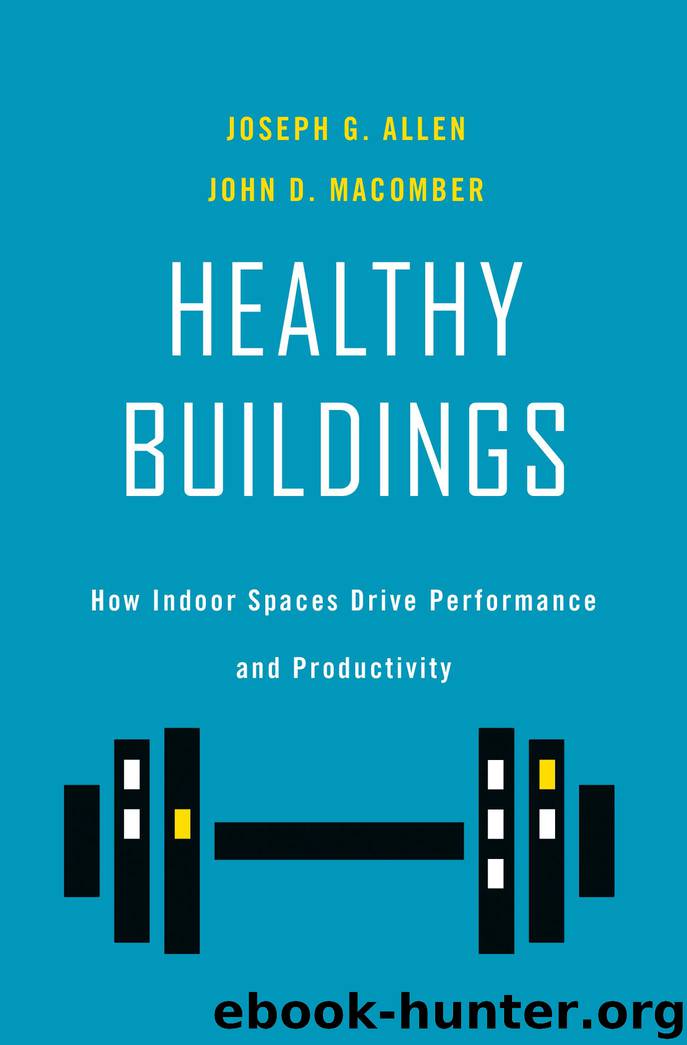Healthy Buildings by Joseph G. Allen

Author:Joseph G. Allen
Language: eng
Format: epub
Publisher: Harvard University Press
One of the main critiques of green building certification systems is that they largely represent the design and performance of a building at one particular point in time. Does the LEED Platinum plaque in an office from 2007 really tell us anything about the performance of that building today, more than a decade later? The answer is largely no. (And we expect this would hold true if any of us were to be tested today on the things we knew at the time we received a college diploma, too.)
Fortunately, just as there has been a movement in education toward “lifelong learning,” there is a corollary in buildings as we seek to move from static determinations to dynamic assessments, where building performance is measured and verified continually. Under the direction of USGBC’s current CEO, Mahesh Ramanujam, it is moving to more dynamic scoring of buildings. (More on the details of measuring and tracking building performance in Chapter 9.)
LEED has had remarkable influence on the market. As of 2019, there were over 8 billion square feet of LEED-certified space globally.3 One of the drivers of this success is the promised financial return on investment through energy savings. LEED buildings save around 20 to 40 percent of energy use intensity when compared with their noncertified counterparts.4 This translates into bottom-line operating savings for the business—savings, as we illustrated in the pro forma tables in Chapter 4, that have the really nice feature of being very easy to estimate, measure, and verify. Energy savings are a line item in the operating budget that everyone can understand. Some building owners and users have the internal capability to do sophisticated cost-benefit analyses of engineering investments, particularly in energy efficiency. Some of those bristle at the relative simplicity and lack of financial analysis in LEED-certified building. But for the most part, the points system has been remarkably effective at moving the industry in a green direction.
Today in some markets, such as New York City and San Francisco, green building is now business as usual. If your new commercial building is not LEED certified, this will often raise red flags. Part of this comes from market forces (“If my competitor is doing it, I had better do it, too”). Part of it is a new set of expectations (tenants now look for the LEED plaque and investors want to see it, too). And partly it is driven by local government. (New York announced in 2019, as part of its Climate Mobilization Act, that it was mandating that buildings reduce carbon emissions by 40 percent by 2030 and 80 percent by 2050.)
LEED is not in itself a building code or ANSI-approved national standard. It’s not a measure of realized performance, nor does it come with a detailed cost-benefit analysis. Even so, USGBC and LEED have driven designers to design more creatively, builders to build better, manufacturers to innovate, and developers to develop more sustainable buildings by almost any measure. What might be next, now that the public and the
Download
This site does not store any files on its server. We only index and link to content provided by other sites. Please contact the content providers to delete copyright contents if any and email us, we'll remove relevant links or contents immediately.
Whiskies Galore by Ian Buxton(40329)
Introduction to Aircraft Design (Cambridge Aerospace Series) by John P. Fielding(32338)
Small Unmanned Fixed-wing Aircraft Design by Andrew J. Keane Andras Sobester James P. Scanlan & András Sóbester & James P. Scanlan(32141)
Craft Beer for the Homebrewer by Michael Agnew(17445)
Turbulence by E. J. Noyes(7037)
The Complete Stick Figure Physics Tutorials by Allen Sarah(6638)
Kaplan MCAT General Chemistry Review by Kaplan(6053)
The Thirst by Nesbo Jo(5785)
Bad Blood by John Carreyrou(5768)
Learning SQL by Alan Beaulieu(5411)
Weapons of Math Destruction by Cathy O'Neil(5036)
Man-made Catastrophes and Risk Information Concealment by Dmitry Chernov & Didier Sornette(4735)
iGen by Jean M. Twenge(4702)
Digital Minimalism by Cal Newport;(4540)
Life 3.0: Being Human in the Age of Artificial Intelligence by Tegmark Max(4507)
Audition by Ryu Murakami(4098)
1,001 ASVAB Practice Questions For Dummies by Powers Rod(4038)
Electronic Devices & Circuits by Jacob Millman & Christos C. Halkias(4027)
Pale Blue Dot by Carl Sagan(4001)
